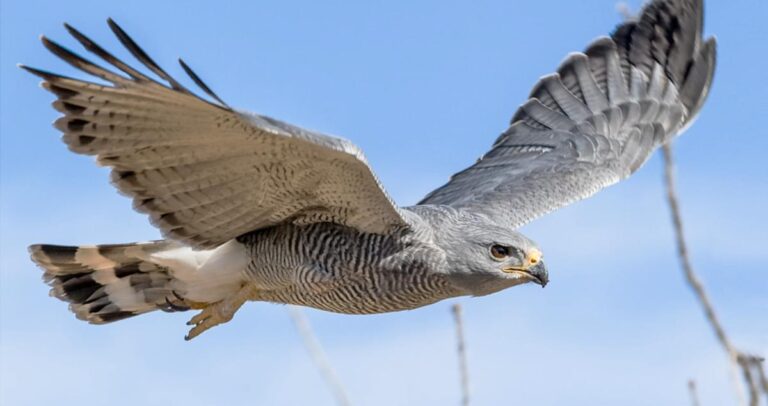Grey Hawk Buteo plagiatus
Taxonomy
Scientific name:
Buteo plagiatus
Family:
Accipitridae
Genus:
Buteo
Species:
Plagiatus
Common names:
Grey hawk
Biology
Morphology:
Grey hawks are medium-sized with shorter wings and longer tails than typical hawks. They have a slate-gray back, finely barred gray and white underparts, a black tail with two or three white bands, and a white rump. They have dark gray or black beaks, brown irises, and yellow ceres and legs. Males are smaller than females.
Reproduction:
The female usually lays two eggs in early May. Only females incubate the eggs. Incubation lasts about 33 days, during which the male captures food for the female. After hatching, the young stay in the nest for about six weeks.
Diet:
Grey hawks are swift, agile fliers that can actively pursue prey by maneuvering through trees. They take reptiles, small mammals, birds, and some insects.
Ecology
Range:
Grey hawks range from the Amazon Basin in South America into the southwestern United States.
Habitat:
They inhabit woodlands and arid deciduous forests. They tend to select patchy open forest, forest edges, and savanna trees. It is not uncommon to find them on agricultural fields.
Threats
Fragmentation of habitat. IUCN Red List: Least concern.

